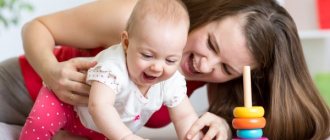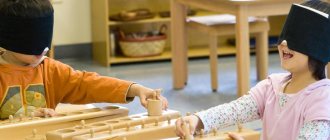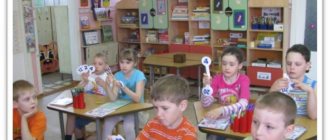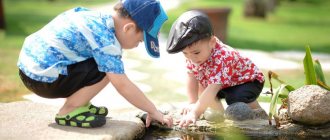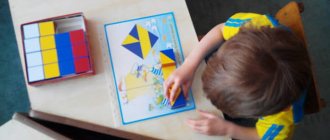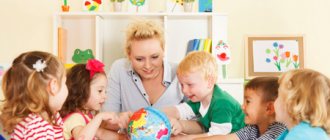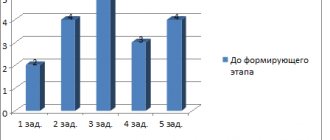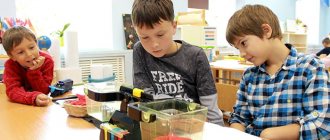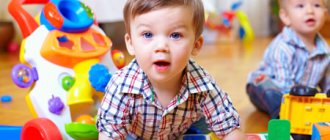By the baby's first birthday, a lot of achievements accumulate, but the most interesting things begin later. The development of a child from one year to the next is a whole adventure: the baby moves around with all his might, grabs everything he can reach and literally becomes smarter every day.
In classes using the Montessori method for children from one year old, they try to take into account all aspects of development in this period, but it is not enough to simply use a random set of exercises, it is important to balance different types of activity and ensure that the overall environment for the baby is conducive to his development. We have prepared a whole webinar on this topic, you can watch it below:
A little history
Maria Montessori (Italian doctor, anthropologist, teacher) is the creator of a unique education method that became popular in the first half of the 20th century. Maria began her medical career as a physician’s assistant, and while working in an institution for children with disabilities (a psychiatric hospital), she became interested in methods of treating such children. Montessori came to the conclusion that their intellectual problems were partly not only medical, but also pedagogical.
Montessori saw how lonely these children were, no one worked with them, they didn’t even have toys. And then she began to bring the children the simplest objects: scraps, boxes, beads. And the kids seemed to come to life.
Maria Montessori developed a unique method of education, which she initially used in working with children with disabilities
Subsequently, Maria took the position of director of the Orthophrenic Institute, specializing in training teachers to work with sick children. There was a school at the institute where Montessori taught children herself. The result was obvious: many students passed the exam at the secondary school level.
The doctor gradually improved her system of education and training, and then decided to apply it to healthy children - special kindergartens were organized for children 3-7 years old.
Montessori schools have gained great popularity in Europe (especially in Germany, Austria, the Netherlands), the USA, Japan, and North Korea. In Russia, this technique was unavailable for a long time.
People's Commissar of Education A.V. Lunacharsky tried to conduct a series of experiments to introduce Montessori pedagogical principles into the system of Soviet preschool education. However, Stalin did not approve of the innovation: the dissemination of the methodology was banned, and Maria Montessori was labeled a “reactionary teacher.”
This pedagogical system was not remembered in our country until the 90s. It was at this time that the first benefits began to appear. Today, many kindergartens and early childhood development centers in Russia use this unique method, and mothers independently study at home with their children.
Today, many mothers are keen on the Montessori system and use it in home activities with their children.
The logical continuation of this education is primary school, but in Russia, due to strict education standards, this is problematic. There are either rare experimental sites operating on the basis of regular schools, or private schools (“on paper” they are considered ordinary). Although abroad, Montessori training ends at 10–12 years.
A brief description of the essence of Maria Montessori's pedagogy
Briefly, the essence of the Montessori method can be conveyed in one phrase : “Help me do it myself.” The author of the system was deeply convinced that powerful internal potential is hidden in every baby from birth. It is important to create conditions for it to open up, and then a harmonious personality will be formed.
The Montessori system involves education without any coercion. The child should naturally awaken a natural interest in learning. This takes into account his physiological and psychological needs at the moment. The key point will be “what the child wants.”
Basic principles of education
In general, the methodology is based on a number of principles:
- Observation of the child. The task of an adult (parent, educator) is to closely study the baby and understand the features of his inner world.
- Humanism is the complete absence of psychological violence and the use of totalitarian pedagogical methods.
- Freedom, independence. It is unacceptable to suppress a child’s energy; on the contrary, it must be directed in a creative direction.
- Minimum influence from an adult. He simply helps the child understand the subject he has chosen, unobtrusively guides him, and creates the necessary developmental environment.
- Individual approach. The characteristics of the child and the degree of his activity are taken into account.
According to Montessori, the leading motivation for a child is the desire for knowledge, curiosity, and enthusiasm. In this case, education is organically intertwined with learning. The baby develops independence skills and at the same time the emotional world is enriched and self-esteem is formed.
Sensitive periods: at what age what to develop
The Montessori method identifies important sensitive periods. This is the age at which the baby most easily and naturally comprehends certain things:
- Perception of order (0–3 years). Children learn to pick up after themselves, maintain cleanliness, wipe up spilled water, collect spilled cereals, and wash dishes. According to the method, at 4 years old it is already more difficult to introduce the baby to all this.
- Development of actions, movements (1–4 years). Coordination is actively developing and muscles are strengthening. It's time to explore children's playgrounds with their ladders, slides, and swings.
- Sensory development (0–5.5 years). Understanding the world through sounds, smells, tactile perception. Ideas about color, size, shape are formed.
- Perception of small objects (1.5–5.5 years). This is the development of fine motor skills. It is at this time that manipulation with various objects is important: rearranging beads, stringing them on a thread, sorting cereals, beans, peas, putting together puzzles, etc.
- Speech development (0–6 years). Various cards and other visual aids and books help with this. Here the role of the adult is already increasing.
- Development of social skills (2.5–6 years). Again, everything should be learned at ease; it is unacceptable to force a child to say hello or say “thank you.”
When the time has not yet come or, on the contrary, has been missed, it will be difficult or simply uninteresting for the child to master a certain skill.
Video: what is the Montessori method
Metal cleaning
Materials: mat on a tray, liquid metal cleaner in a bottle, a drawer with cotton balls or pieces of sandpaper, a cup each for dirty cotton wool and a small amount of cleaner, a polishing cloth, a not too small brass object without decoration.
Goal: development of coordination of movements. Cleaning metal objects.
Age: about three years.
How to work with the material. The teacher prepares the workplace with the child. Starting together can give the child extra incentive to do the exercise. All objects that the child needs must be within his field of vision. First of all, the teacher pushes a small bottle of cleaning product. At the same time, he holds onto the lid. A large bottle would be an additional difficulty for the child. He places the bottle on the mat, unscrews the cap and places it bottom down. She pours a small amount of cleaning product into a cup, caps the bottle, and places it back on the tray. Interesting point! Opening, closing, pouring, screwing. In addition, this prevents the bottle from tipping over. Using a cotton ball, the teacher takes a dark cleanser from the cup, shows the child a small amount of the cleanser on the cotton ball, and spreads it in slow and careful circular motions over the surface of the item. Dirty cotton wool is placed in a prepared cup. It is especially difficult to use not too much and not too little cleaning product. While the cleaning product is waiting to work, the teacher pours the remaining product back into the bottle and closes it again. He then takes a cotton swab and wipes the cleaning agent off the surface of the brass object and shows the child the dirt on the cotton. This process is repeated until the cotton wool is clean. Interesting point! The teacher takes a polishing cloth and rubs the surface of the object until it shines, shows the object to the child, conducts the exercises without interruption, with slow precise movements and with obvious interest in the matter. In this way, the child is given the opportunity to learn the course of actions in connection, clearly understand individual actions and pay attention to the matter as a whole. The teacher invites the child to repeat the exercise with another thing and watches him. After some time, you can move away, but continuously maintain contact with the working child. When the activity is finished, the teacher shows how to clean up and put away the required material. Only after cleaning is the exercise considered completed.
Further exercises: complicate the exercise with the help of small, deformed or decorated objects. New objects or tools for work can help the child maintain interest in the activity longer.
Error control: dirty polishing cloth, shiny thing.
Application: cleaning door handles, cutlery.
Comparison of the Montessori method with other early development systems
As you know, the Montessori system is not the only method of early childhood development, so it will be interesting to compare it with other systems.
Table: comparison of the Montessori system with other early development methods
| Author of the method | Distinctive features |
| Zaitsev | The system offers a game form of work. And Montessori classes are not a game, but, in fact, the ordinary life of a child. Here you need a lot more material than tables and a set of cubes. |
| Glenn Doman | Doman training is carried out mainly with the help of cards, there is no impact on the sense of touch. Montessori places great importance on the tactile function. |
| Nikitins | Although classes according to Nikitin are somewhat reminiscent of the Montessori method (the parent is perceived as a senior comrade, and not an inspector), in this system a significant role is assigned to the hardening of children, which is not the case with Montessori. |
| Cecil Lupan | This system is aimed at maximizing active learning in the first year of a child’s life. In Montessori, everything is served in doses, in equal portions at different ages. The child is constantly in the process of learning. |
Find a cap by size (from 2 to 4 years)
Objectives of the exercise : development of visual and motor coordination.
You will need: 4-6 bottles or jars of different sizes with lids (the lids can be stored in a small container).
Presentation : place bottles on the table in front of the child; slowly remove the caps and screw them back on; First, put on the caps that match the size of the bottles, then mix the caps and let the child choose the right caps for the bottles.
Pros and cons of Montessori pedagogy
Of course, the Montessori method is unique and leaves few people indifferent. Its supporters highlight the following significant advantages of the pedagogical system:
- The technique can be adapted to different cultures, because it is based on the basic needs of the child.
- The children learn everything with pleasure, because they themselves choose what to do. There is no boredom, no fear of a difficult task imposed by an adult.
- Children who were trained according to Montessori cope better with household responsibilities than others, are more responsible, can properly manage their time, know how to keep themselves busy, while respecting the needs of others.
- Didactic aids and exercises with them contribute to the accelerated development of mental activity, logic and motor skills.
The Montessori method promotes the accelerated development of intelligence and logical thinking
However, the technique also has its opponents. And their criticisms can be summarized in the following theses:
- There are no spontaneous creative games, for example, role-playing games. And this is very important for the development of the child’s imagination, his emotional sphere. The system does not pay enough attention to creative activities (fine arts).
- Predominant intellectual development distorts normal psychology and deprives the child of the carefree joy of childhood. Montessori underestimates the role of play in a child's development and replaces it with useful activities with teaching aids.
- In the pedagogical process, reading fairy tales is ignored. Maria Montessori considered them a departure from reality and replaced them with a realistic description of objects. Hence, the child does not develop the ability to empathize, fantasize, or conduct an internal dialogue with the characters of the work.
- A child who studied at home using this system (and also who attended such a kindergarten) will find it quite difficult in a regular school, where all the students sit at their desks, performing a specific task from the teacher. In addition, such a student has already formed an attitude towards an adult as an assistant, and not as an authority.
- Many children are brought up in families with an authoritarian order and therefore not every mother is able to act as an older comrade or assistant (as the Montessori system assumes).
- The technique is not suitable for all children. This is a bad option for overly mobile, active guys who have problems with perseverance and concentration. In addition, if the child has expressed creative abilities, then they will be unclaimed, since the technique is based on a rational way of understanding the world.
The Montessori method is not suitable for an overly active, active child, since it is aimed at quiet activities that require concentration.
Video: for whom the Montessori method is not suitable (a specialist explains)
Pouring water
Material: tray, watering can made of transparent material with a water level mark, vessel with a large hole, rag.
Goal: development of coordination of movements. Help you navigate the world around you.
Age: about three years.
How to work with the material. The watering can is filled to the mark with colored water. (If the watering can is overfilled, then pouring water becomes difficult). The watering can and the vessel stand next to each other. Order in the workplace is important. The teacher takes the watering can by the handle, lifts it high, tilts it over the vessel and slowly pours water until the vessel is full. With a weak tug, he returns the watering can to its previous position, takes a rag with his other hand, wipes away the remaining drops and places the watering can on the table again. He takes the filled vessel, lifts it to the height of the watering can and pours the water back into the watering can. Then he wipes the remaining drops with a rag and puts the vessel back on the table. A particularly interesting point! The teacher demonstrates the exercise, slowly and clearly performing the movements, and always with obvious interest in his lesson. The introduction should not be interrupted until the child understands the entire course of action. He invites the child to repeat the exercise and watches him as he does so. Finally, the exercise can be varied by taking a larger number of vessels or a vessel with different properties, for example, with a small hole.
Creating a nurturing Montessori environment at home
Since in the Montessori system the primary role is played by the conditions for unlocking the child’s potential (and not the imposition of ready-made templates), the role of the developmental environment increases. In a child’s nursery, it is advisable to highlight several key areas of development:
- Practical activity area. Its task is to instill self-service skills and perform simple household functions. Functional toys are placed here: dishes, cleaning items (preferably real, not toy ones - sponges, rags, brushes, etc.), aids with buttons, snaps, zippers, lacing, etc.
- Zone of sensory development. These are various small objects, puzzles, boxes of cereals, sensory bags, insert molds, sets of geometric shapes of different shapes, sizes, colors, musical instruments, hammers, jars with aromatic substances, scraps of fabrics of different textures, lacing, etc. In general, there are objects for the development of the senses. In general, Montessori paid special attention to the development of touch and fine motor skills, believing that it was precisely precise actions with small objects that improved thinking, speech, memory, and attention.
- Native language zone. Here children learn letters, learn to read, prepare to master writing skills, and develop sound perception. The filling of the zone will be appropriate: cards with rough (velvet paper) letters, syllables and whole words, just figures of letters, their stencils for tracing, semolina with a tray (on which the child will write letters), etc.
- Math zone. Here there are boxes with numbers (cards and three-dimensional figures), signs for mastering the operations of addition, subtraction, multiplication and division, barbells, spindles, Seguin boards, a set of gold beads, etc. Moreover, it is not necessary that the preschooler master all mathematical operations (especially multiplication and division): it all depends on his enthusiasm and individual pace of development.
- Natural science or space zone. Here the child gets acquainted with the world around him (including the universe), learns to classify living and inanimate nature, and learns the relationships and patterns in it. The child will have the opportunity to conduct real experiments: for example, make sure that a tree burns and a stone sinks in water, build a mini-volcano that will erupt, etc. In the zone there are various cards with images of plants, animals, posters on the human structure, a globe , world maps, models of planets of the solar system, etc., materials for experiments.
- Area of development of gross motor skills, or motor. It is located away from other areas and contains sports equipment.
It is clear that at home (especially if the children's room is small) it is often unrealistic to arrange all these areas, but try to at least allocate separate shelves, for example, in a rack for each group of benefits.
Photo gallery: rooms for small children, decorated according to Montessori conditions
The nursery has a wonderful corner for developing gross motor skills.
Even a blanket on the bed provides an opportunity for sensory development
Such a wardrobe from an early age teaches the child to be independent and develop self-care skills.
The parents' task is to periodically change the contents of the upper and lower shelves so that the child can choose his own study aids
How to make Montessori toys with your own hands
The peculiarity of the Montessori system is that, in fact, you do not need to buy any special toys. If you don’t have something at home, you can do it yourself or buy it in a store for pennies.
It will take a minimum of time and will not require special skills on the part of parents. And improvised means are suitable as materials.
Insert frames
Such toys will help kids understand what shapes are and what they are. And also learn to quickly distinguish colors, master the concepts of “more and less.”
For production you will need:
- box (you can take it from the candy you’ve eaten);
- a landscape sheet, but a Whatman paper is better;
- multi-colored cardboard.
Cut the box into rectangles. Their size depends on the number of figures that will be placed in the frame. For each rectangle, its own geometric figure is cut out of multi-colored cardboard. The figures in one row should be multi-colored and vary in size. The largest figure comes first, and those below should gradually become smaller. To hold the figures, whatman paper is glued to the back of the box.
Pyramid
The easiest way is to sew such a toy, but in order to do this, the parent must have at least primitive sewing skills. But there are a lot of benefits from this toy. She will teach the baby to distinguish colors, sizes, tactile sensations and more. All you need to do is use different fabrics and fillers.
To work you will need:
- fabric of different colors and, if possible, texture;
- Velcro tape;
- materials for stuffing - cereals, foam rubber, padding polyester, pebbles, in general, anything.
The fabric needs to be cut into paired squares of different sizes - from 5 to 12 cm. Take a pair of squares. Velcro is sewn onto one of the flaps of fabric, and the part that should stick is sewn onto the second. The squares are sewn together (from the wrong side). Next, the material needs to be turned out and filled with filler. And repeat this until all the pads are filled.
But it is important that the pyramid does not turn over; the lower layers are filled with heavier materials.
Colored hedgehogs
Hedgehogs are one of the most popular characters in children's fairy tales, so a child will be happy to play in such company.
To make these toys we will need:
- sheets of multi-colored cardboard;
- multi-colored clothespins.
You need to cut out two identical hedgehog shapes from cardboard. The easiest way to do this is to fold the cardboard in half and then start cutting. Next, you need to glue the figures together, drawing eyes, a mouth, and a nose. When the workpiece is ready, all that remains is to invite the child to give the hedgehog needles by attaching multi-colored clothespins to it.
Laces
Lacing games are the best way to develop fine motor skills in a child’s hands. You can buy them in a store, but the price isn’t great, so it’s much cheaper to make them at home.
Moreover, everyone probably has the materials needed for this at home:
- wooden base, an alternative to which can be thick cardboard or plywood;
- holes can be made with a hole punch or knife;
- buttons glued to the base;
- lace.
The set of materials depends on what is at hand. Sometimes you don’t even need to drill anything, just glue buttons to the board and show your child how to wrap the laces around them. It all depends on your imagination.
Soft balls
The essence of the game is that the baby is given four fur balls, which must be pushed through the tube one at a time so that the last one pushes the first one out.
To make such a toy, we need:
- thick cardboard;
- bushing (balls will pass through it);
- shampoo bottle (this will be the leg that will hold the sleeve);
- skeins of multi-colored yarn acting as balls.
You need to make two cuts in the shampoo bottle through which the sleeve will go. The sleeve itself should be exactly long enough for three balls stacked in a row to pass through it. You can secure the structure with tape and decorate it with colored paper.
Training rules and materials for classes
It is interesting that the most ordinary objects can act as toys using this method: a basin, a strainer, napkins, a spoon, a sponge, etc. Along with them, there are also specially designed Montessori aids: for example, the Pink Tower, the Brown Ladder, insert molds , numerical machines, frames with fasteners, etc.
Along with ordinary objects, the method involves the use of special aids developed by Maria Montessori
In general, didactic materials in the Montessori system arouse keen interest in the child, involve practical activity (rather than abstract explanations from an adult), provide the opportunity for repeated repetition, independent correction of mistakes, and foster independence and independence.
When studying didactic material, you need to teach your child to follow certain rules:
- All manuals and toys are publicly available. But the baby must learn that they cannot be scattered around the room, but must be put in their place.
- The child always chooses the material for the lesson himself.
- An adult should tell the child that they should not switch attention from one manual to another: the exercise should be completed.
A teacher or parent needs to praise the child more often and respect his efforts. This will further stimulate independence and self-confidence.
In general, as far as Montessori home education is concerned, any parents can make their entire home a “developmental environment.” To do this, in addition to purchasing appropriate toys, you need to allow the child to participate in the everyday life of the family: doing all possible cleaning, caring for plants, pets, repairing their toys, and doing handicrafts.
Parents (fans of the Montessori system) can organize a “developmental environment” at home - allow children to participate in cleaning and other household activities
Tips for organizing home activities with children of different ages
It is advisable to divide recommendations for parents on homework by age.
Up to a year
From the age of 5 months, a mother can use busy boards, because these developmental aids were invented by Maria Montessori (originally they were wooden, but today they have been adapted into soft rugs and books). You can also use tactile exercises with pads filled with cereals, pebbles, and foam. Let the baby just touch them.
Interestingly, the idea of creating a busy board (developmental board) belongs to Maria Montessori
Another type of activity is holding out objects to the toddler and transferring them from one child’s hand to another.
Video: Montessori educational toys for babies
From one year of age to 3 years
The range of exercises is expanding, the following options are being added:
- Games with water. The baby catches small toys and pebbles from a bowl of water (with his hands or a net), pours water from a watering can, and pours liquid from one container to another.
After one year, you can already offer your child manipulations with water.
- Stringing objects onto a support (based on the pyramid principle).
- Games with a spoon (catching objects with it).
- Exercises with clothespins (fastening them to a rope or fabric).
- Fasteners, lacing.
- Sorting items poured into one container (buttons, pasta, small toys, etc.).
After a year, you can introduce exercises for sorting cereals and small items
- Drawing on sand with a stick, brush, etc.
- Feeding a plastic toy (through a cut-out mouth).
- Modeling from plasticine (rolling balls, sausages).
Video: Montessori water games
For ages 2–5 years
Wooden toys (geometric figures, etc.), puzzles, and didactic games to get acquainted with the outside world are already being actively used. The study of numbers and letters begins.
In the period from 2 to 5 years, the study of numbers and letters begins
In addition, you should actively involve the child in performing household chores: helping with washing, cleaning, cooking (for example, kneading dough, arranging fruits by color).
After 5 years
At this age, perseverance develops, and the previously mastered skills of self-care and house cleaning become more complex. Math and reading are being actively taught. The child is offered exercises to practice writing skills (printed shading, copywriting, drawing letters on a blackboard with chalk, etc.). Games to get acquainted with the world around us (for example, on the theme of space) are becoming more diverse.
Interest in sensory play is already declining at this age. You can increase it, for example, by practicing with kinetic sand.
Box with fabric samples (from 2.5 to 5 years)
Objectives of the exercise : development and refinement of tactile sensations.
You will need: a small box containing a couple of pieces of each fabric of different textures (for example, silk, cotton, wool, mohair, etc.).
Presentation:
- show your baby three pairs of pieces of fabric that contrast the most in texture;
- then mix them and ask the child to find the pairs by feeling them with his hands;
- when the baby understands the meaning of the exercise, add other pieces of fabric;
- encourage your child to do the same thing blindfolded.
Useful literature about the Montessori development system
Parents who decide to teach their child at home using the Montessori system will find it useful to read the following publications:
- Montessori M. Help me do it myself. - M. 2000
- Montessori M. Children's home: Method of scientific pedagogy. - Gomel, 1993.
- Montessori M. The importance of the environment in education // Private school. - 1995. - No. 4.
- Montessori M. Teacher training: // Almanac “MAMA”: Scientific and methodological publication of the Interregional Alternative Montessori Association. — Vol. 1. - M., 1994.
- Dichkovskaya I.N., Ponimanskaya T.I. Education for life: the Montessori educational system. - M., 1996.
- Montessori M. The mind of a child // Montessori. - M., 1999.
- Afanasyeva T. Teach according to Montessori. - M., 1996.
- Boguslavsky M.V., Sorokov D.G. Yulia Fausek: Thirty years of the Montessori method. - M., 1994.
- Hiltunen E. Author's program of education and training in Russian Montessori kindergarten and primary school. - M., 2000.
- Pedagogy M. Montessori: Course of lectures. — Parts 1–2. - M., 1992–93.
- Doubtful K.E. How to help a child build himself? (Conversations about Montessori pedagogy). - M., 1999.
- Doubtful, K. E. Montessori Home School. 2 years / K. E. Doubtful. - M., 2014.
- Dance, Marie-Helene 60 lessons with a child using the Montessori method / Marie-Helene Place. - Moscow, 2014.
- Orlova, Daria The Big Book of Montessori / Daria Orlova. - M., 2011.
- Hainstock, Elizabeth Genius is taught from birth. Montessori system at home / Elizabeth Hainstock. - M., 2012.
